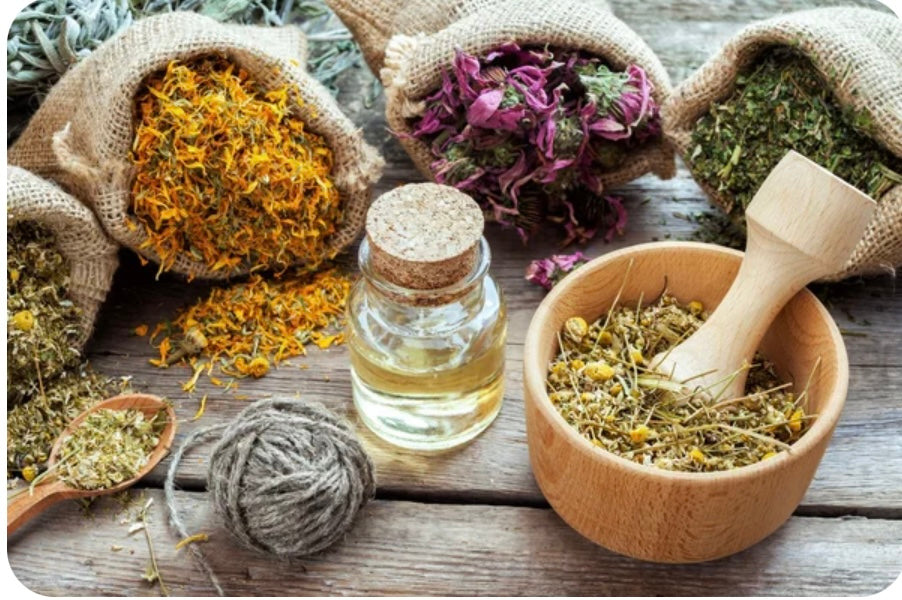SKU:
Chamomile Organic
Chamomile Organic
Super Deals
Ends: Jul 9, 11:59 PM PT
Botanical Name: Matricaria recutita
Common Names: Hungarian chamomile, wild chamomile, German Chamomile
Use: (a) Antispasmodic, (b) Anti-inflammatory, (c) Anti-allergenic, (d) Analgesic, (e) Antipyretic, (f) Antiseptic, (g) Antibacterial against Strep. pyogenes(in vitro research), (h) Antifungal, (i) Carminative.
Chamomile is used for indigestion, gas and accompanying pain, gastritis and gastric ulcers and externally for burns, ulcers and wounds. Being a mild sedative for nervousness and nightmares, it is especially beneficial for infants and elders who are restless when attempting to sleep.
Chamomile is indicated for menstrual cramps and babies with colic or who are teething. Poultices used over the spine are helpful for viral meningitis. The ability to relieve pain may be due to its prostaglandin-inhibiting & anti-inflammatory action.
Active Constituents of Chamomile
Chamomile has many volatile oils among them; proazulenes, bisabolol, farnesine, pinene, anthemal, spiroether, and angelic acid. It also contains alpha bisabolol, matricin, apigenin, sesquiterpine lactones, flavonoids (apigenin, quercetin, patuletin, and luteolin), cyanogenic glycosides, bitter glycosides, coumarins, valerianic acids and tannins.
Disclaimer
This information in our Herbal Reference Guide is intended only as a general reference for further exploration, and is not a replacement for professional health advice. This content does not provide dosage information, format recommendations, toxicity levels, or possible interactions with prescription drugs. Accordingly, this information should be used only under the direct supervision of a qualified health practitioner such as a naturopathic physician.
*Organic
Payment & Safety
Ensure secure transactions and peace of mind with our trusted payment methods. Your safety is our priority, we employ advanced security measures to protect your personal information and sensitive data.
Do you need more details? Visit our FAQ's or Contact us
Super Deals
Ends: Jul 9, 11:59 PM PT
Couldn't load pickup availability
Botanical Name: Matricaria recutita
Common Names: Hungarian chamomile, wild chamomile, German Chamomile
Use: (a) Antispasmodic, (b) Anti-inflammatory, (c) Anti-allergenic, (d) Analgesic, (e) Antipyretic, (f) Antiseptic, (g) Antibacterial against Strep. pyogenes(in vitro research), (h) Antifungal, (i) Carminative.
Chamomile is used for indigestion, gas and accompanying pain, gastritis and gastric ulcers and externally for burns, ulcers and wounds. Being a mild sedative for nervousness and nightmares, it is especially beneficial for infants and elders who are restless when attempting to sleep.
Chamomile is indicated for menstrual cramps and babies with colic or who are teething. Poultices used over the spine are helpful for viral meningitis. The ability to relieve pain may be due to its prostaglandin-inhibiting & anti-inflammatory action.
Active Constituents of Chamomile
Chamomile has many volatile oils among them; proazulenes, bisabolol, farnesine, pinene, anthemal, spiroether, and angelic acid. It also contains alpha bisabolol, matricin, apigenin, sesquiterpine lactones, flavonoids (apigenin, quercetin, patuletin, and luteolin), cyanogenic glycosides, bitter glycosides, coumarins, valerianic acids and tannins.
Disclaimer
This information in our Herbal Reference Guide is intended only as a general reference for further exploration, and is not a replacement for professional health advice. This content does not provide dosage information, format recommendations, toxicity levels, or possible interactions with prescription drugs. Accordingly, this information should be used only under the direct supervision of a qualified health practitioner such as a naturopathic physician.
*Organic
Payment & Safety
Ensure secure transactions and peace of mind with our trusted payment methods. Your safety is our priority, we employ advanced security measures to protect your personal information and sensitive data.
Do you need more details? Visit our FAQ's or Contact us


